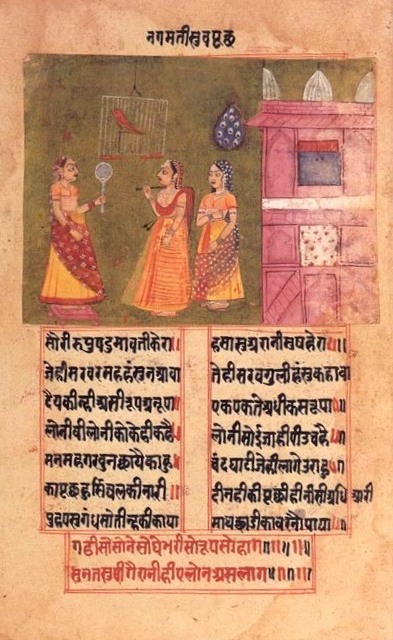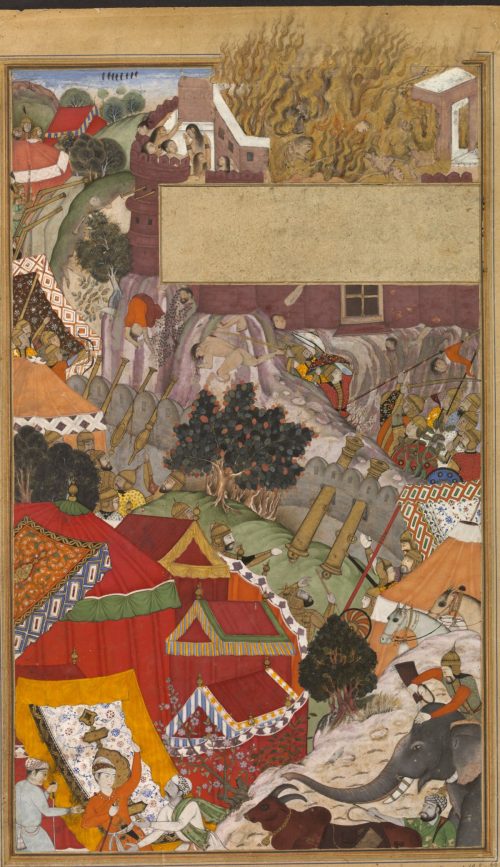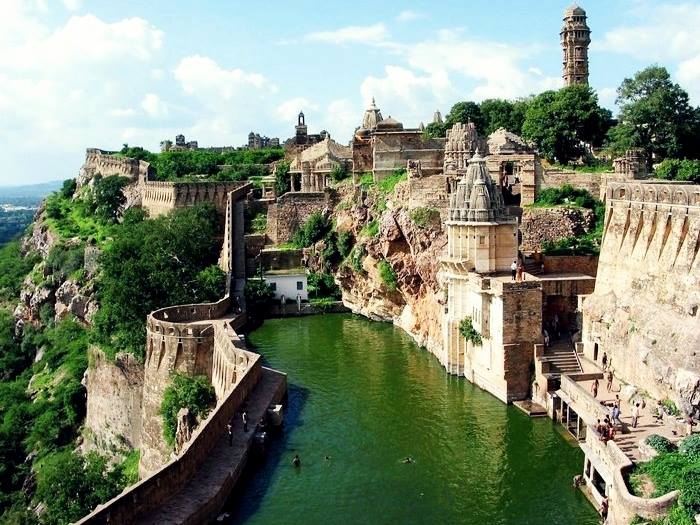Seen the Padmaavat Trailer? Here’s What History Says About This Saga!
The earliest reference to Rani Padmini is an epic poem written by an Awadhi poet, Malik Muhammad Jayasi, in 1540 called 'Padmavat'.

The much-awaited Padmaavat trailer is out and it looks like Sanjay Leela Bhansali has yet another breathtaking masterpiece on the cards. From the resplendent colours of Rajputana attire to the gloomy greys of Alauddin Khilji’s tents, the trailer is full of grand visuals and vistas that leave a viewer intrigued about the story.
So if you are curious about whether Padmaavat is a tale from a bygone era or just an extension of poetic imagination, here’s what both history and folklore say about this epic saga.

The earliest reference to Rani Padmini is an epic poem written by an Awadhi poet, Malik Muhammad Jayasi, in 1540 called ‘Padmavat‘. Set in an era when the Delhi Sultanate and Rajput kingdoms ruled different regions of North India, the poem is a fictional retelling of the siege of Chittorgarh that Sultan Alauddin Khilji undertook in 1303.
As per Jayasi, Padmini was the princess of the Sinhala-dwipa (present-day Sri Lanka), born to King Gandharvsena and his chief consort Champavati. She is described as a stunning woman, of luminescent beauty “no such was ever seen upon the Earth.

The story goes that the tales of Padmini’s legendary beauty were spread to lands far and wide by a talking parrot named Hiraman. After Hiraman incurred the wrath of the Sinhala king, it flew to Chittor, where it told its ruler, King Ratan Rawal Singh, about Padmini.
The king, “like the fabled bee, became enamoured”, and travelled to Sinhala-dvipa to attend Padmini’s swayamvar, which he won. After a long journey filled with trials and adventure, he brought her to Chittor as his beloved queen.

A few years later, the king caught a member of his court – a sorcerer called Raghav Chaitanya – invoking dark spirits and banished him from Chittor. The vengeful man travelled to the Delhi court of Alauddin Khilji and told him all about Padmini’s mesmerising beauty, following which the Sultan marched upon Chittoor to acquire her for himself.
On reaching Chittoor, Alauddin Khalji conveyed his desire to the Rajput King to see the Queen about whom he had heard so much. Unaware of the impending danger, Ratan Singh acceded to this request. However, Padmini agreed to show only her mirror reflection to the impudent Sultan.
Smitten by a mere glimpse of Padmini’s reflection, Khilji became obsessed with the queen and laid siege to Chittoor. Ratan Singh and his Rajput warriors fought bravely but fell under the staggering force of the Sultanate’s massive army. Finally, Khilji entered the fort to look for the Padmini, but by then the brave Queen had already committed jauhar (self-immolation), choosing honour over life.

A few decades after Jayasi wrote Padmavat, Abul Fazl (the court chronicler of Mughal emperor Akbar) penned another famous re-telling of the siege of Chittoor. This was followed by over a dozen adaptations, with the most popular one being “Gora Badal Padmini Chaupai“, a 16th-century composition by Rajasthani bard Hemratan.
However, contemporary historians remain highly sceptical of Queen Padmini’s existence, claiming it a mere figment of imagination on the part of both Jayasi and Fazl. Nonetheless, Khilji’s subjugation of Chittoor is indeed a part of India’s recorded history.
A ruthless warmonger who killed his own paternal uncle to ascend the throne, Khilji ruled over a large swathe of the Indian subcontinent from 1296 to 1316. Other than his military expertise, he was also known for his strict administration and market reforms. Interestingly, Amir Khusrau, who accompanied Khilji to chronicle his military campaigns, made no mention of Chittor’s Padmini in his writings.

This is one of the main reasons why many historians believe the sultan’s invasion of Chittoor to be an ambitious ruler’s attempt to expand his kingdom rather than a lovesick man’s personal quest to acquire a beautiful woman. Furthermore, Jayasi’s original poem is shot through with signature Sufi imagery (the philosophical tradition to which the poet belonged) of which love and longing are an integral part.
As of now, the true story of Padmavati remains shrouded in layers of myth, mystery and age-old folklore. Will Bhansali follow Jayasi’s epic saga or take a detour from story pervading popular imagination? Only time will tell!
Also Read: The Forgotten Story of Rani Abbakka Chowta, the Fearless Warrior Queen of Tulu Nadu
Like this story? Or have something to share? Write to us: [email protected], or connect with us on Facebook and Twitter.
NEW: Click here to get positive news on WhatsApp!
If you found our stories insightful, informative, or even just enjoyable, we invite you to consider making a voluntary payment to support the work we do at The Better India. Your contribution helps us continue producing quality content that educates, inspires, and drives positive change.
Choose one of the payment options below for your contribution-
By paying for the stories you value, you directly contribute to sustaining our efforts focused on making a difference in the world. Together, let’s ensure that impactful stories continue to be told and shared, enriching lives and communities alike.
Thank you for your support. Here are some frequently asked questions you might find helpful to know why you are contributing?


This story made me
-
97
-
121
-
89
-
167











